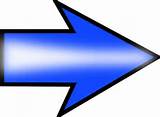Andrew
followed up that invitation immediately, phoned Yeend,
and went to see him at Parramatta.
Yeend told him that NH Wright (Walter Friend's brother-in-law)
had told him that "Lawrence, the Lady Chatterley's
author, had used material about 'a pseudo-military movement'
in his Australia novel Kangaroo".
Wright
had told Yeend that he had gleaned this in a conversation
with Walter Friend at either the Imperial Services Club
or the Schools Club in town.
When Andrew passed this information on to me, I remarked
in my diary: "...so Walter, the dirty dog, knew all
along! This must be the clue that unlocks it all. Ferrets
scattering in all directions. Exciting days, exciting
hours!"
Andrew suggested that I contact Yeend myself.
The date of Yeend's interview with Wright especially interested
me. It had been (Yeend told Andrew) on the 26th of May,
1974. This was a year before Sandra and I returned to
Australia after Ottoline was published, and two
years before my first article on Lawrence and Kangaroo
was published in The Australian (so, as Andrew
observed, this was information "untainted" by
anything I had subsequently uncovered or written).
I wrote to Yeend, introducing myself, and enclosing a
recent article I had written for Rananim on Lawrence's
movements in Sydney in May-August 1922.
He replied on May 22, 1994:
| Your
article hangs together well but you desperately need
to link [Lawrence's activities] to the Friends. Again
one has to ask why does it have to be Walter Friend?
His father and several brothers have equal claims. |
He
went on:
| Now
my predicament is that as Archivist I cannot allow
access to the Friend material any more, yet I do hold
a strong piece of evidence which your thesis needs.
|
He
offered to approach the Friend family to see if they would
grant permission for me to see "the strong piece
of evidence", using what he described as "the
greater good" argument.
Meanwhile, while he was trying to move the Friends, he
did his best, in a correspondence that lasted several
years, to provide me with some clues derived from what
turned out to be an old-boy memoir he had received from
the member of the Friend family who had, apparently, personally
met and helped Lawrence in Sydney and Thirroul in 1922.
It was soon apparent to me that this particular Friend
was "the other half" of the amalgam of Jack
Callcott in Kangaroo - the person whose identity
Lawrence was trying to hide behind the characterisation
of Jack Scott (Scott being, as mentioned above, the "cover"
for the person whose real-life persona Lawrence was more
intent on "protecting").
Some months later, in one of his letters, Yeend dropped
a rather indicative clue as to this person's identity,
when he inadvertently referred to Scott as "Bob Scott"
(or was that "slip" not-so-inadvertent?).
